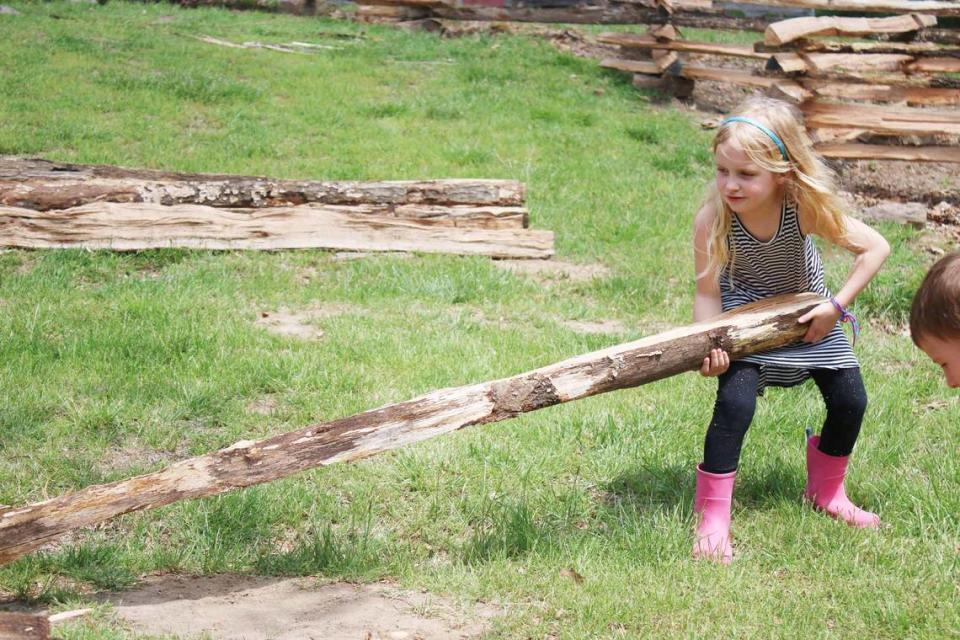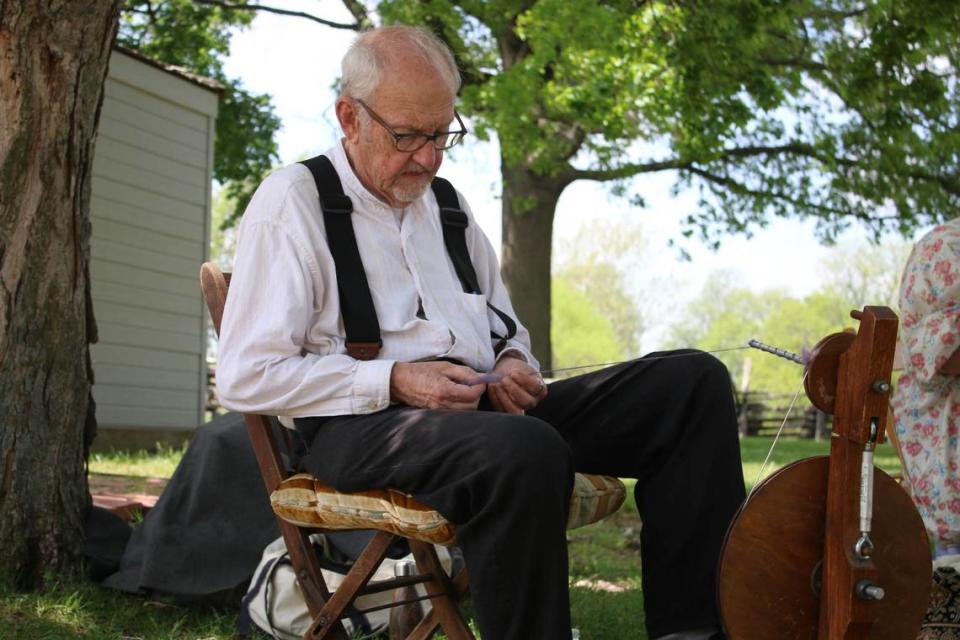Sheared sheep had their moment to shine at Missouri Town 1855’s family event in LS
From the barnyard to the spindle, visitors to Missouri Town 1855 recently learned about the importance of sheep to mid-19th century residents of the state. The Lee’s Summit site held its annual sheep shearing day May 6.
Though it might look uncomfortable for the sheep, shearing doesn’t hurt them, the pros say. And with hot temperatures just around the corner, it’s crucial to do it now.
“Sheep, for their health, the breed we have, need to be shorn annually,” said Jenna Peterson Riley, site supervisor for Missouri Town. “It is such a wonderful example of the skills and trades that would have been very commonplace in the mid-19th century, many of which have been lost or forgotten.”
Part of the mission of Missouri Town 1855, Riley said, is to preserve and generate interest in the larger living history museum community.
In addition to watching local farmer Danny Smith shear the site’s 11 ewes, visitors participated in other hands-on activities.
“This year, we’re calling it ‘lambs to lanolin’ and talking not just about the fiber that comes from sheep but all the different byproducts we get from sheep,” Riley said.
Shawnee resident Daniel Jones, 10, got elbow-deep in a bucket of water, cleaning pieces of wool from the freshly sheared sheep.
“I just like washing it and seeing it go from brown to white,” he said.
Visitors could also dip their own tallow candles, see how wool was dyed and watch lamb get cooked over an old-fashioned hearth.
“I grew up in a more rural area, but my daughter’s growing up in Overland Park and she doesn’t get that experience,” said Bethany Coon.

Her daughter, 6-year-old Pippa, got down to work helping museum interpreters fix the stacked wood fence.
“We really give them the opportunity to create those tactile memories and opportunities for engagement. I always say I’m the first one to make the grown-ups do it, too. It’s not just for kids,” Riley said.
Several members of the Osage Spinners and Weavers Guild came out to demonstrate their talents with wool.

Children often wonder where their clothes come from, said Joanie Meador, a guild member who was showing people how a spinning wheel works.
“They’re always interested in what you can do with (wool).”
Although you might think of cows when imagining livestock on one of those old farms, sheep were also popular.
“Almost all of the families who had homes and structures that are now located at Missouri Town had sheep listed on the agricultural census, because they are so versatile,” Riley said. “Sheep are a renewable source of fat, fiber and protein.”
Children weren’t the only ones marveling at the different activities.
“It’s pretty amazing to see how things have been preserved so you don’t forget,” said Jacob Nork of Kansas City.
Missouri Town 1855 is open Tuesdays through Sundays for its daily activities. Admission is $8 for adults, $4 for seniors and youth and free for kids under 5. The site offers joint admission with Fort Osage that allows visitors to see the other site free. That offer is good for a one visit in the next year from the date of admission.

